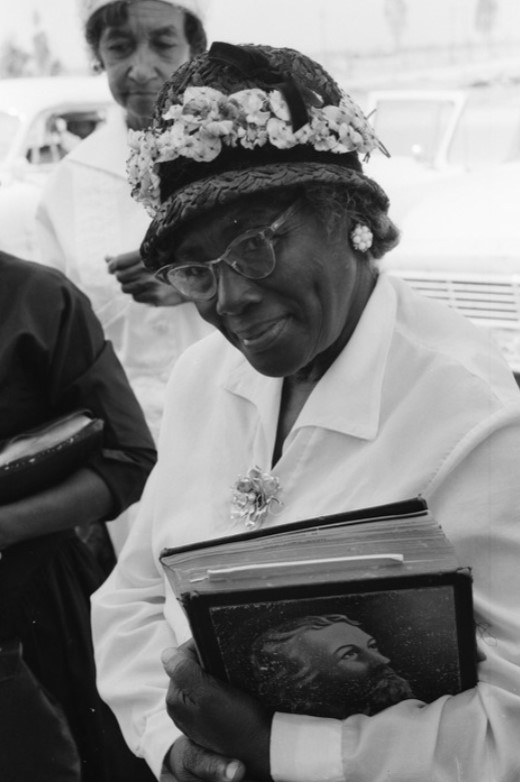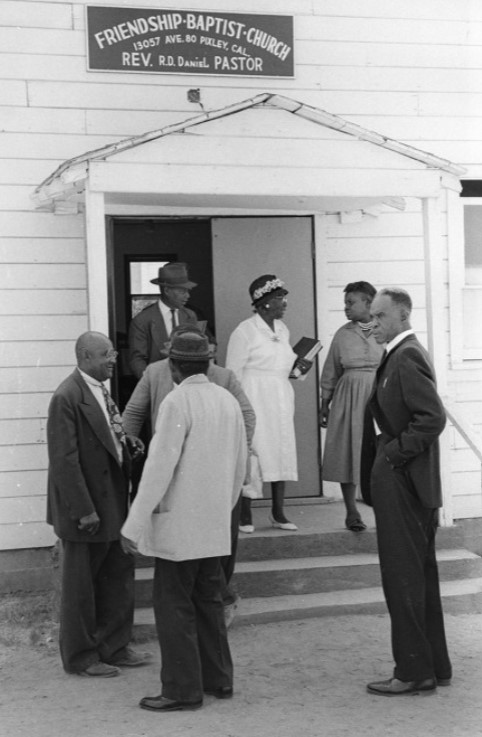
During the Great Depression, when waves of migrants came to California to escape the drought, Black cotton farmers were part of the population transfer. Some were recruited by California cotton growers, while others came on their own. More migrated after the Second World War. White towns didn’t welcome them and they had to start their own communities, some fifteen in all in California’s Central Valley. In the early sixties, photographer Ernest Lowe documented some of these communities, focusing primarily on the small town of Teviston. Composed mainly of self-constructed houses, the town had no water.
The small Baptist church was a center of American American life. Lowe took many pictures of the congregation, capturing several shots of older women beautifully dressed for services. The woman above took care to match her flowered hat with flowered earrings and a flower broach. Consider how hard it must have been to keep her white dress clean in a home with no running water.

Above you can see the whole dress, a shirtwaist style favored by older women over the more stylish shift dress.
In the sixties, big machines replaced hand-picked cotton and most of the Blacks of Teviston moved on. Today it is largely a Latino community. After a few decades with a functioning well, it once again has no water.

